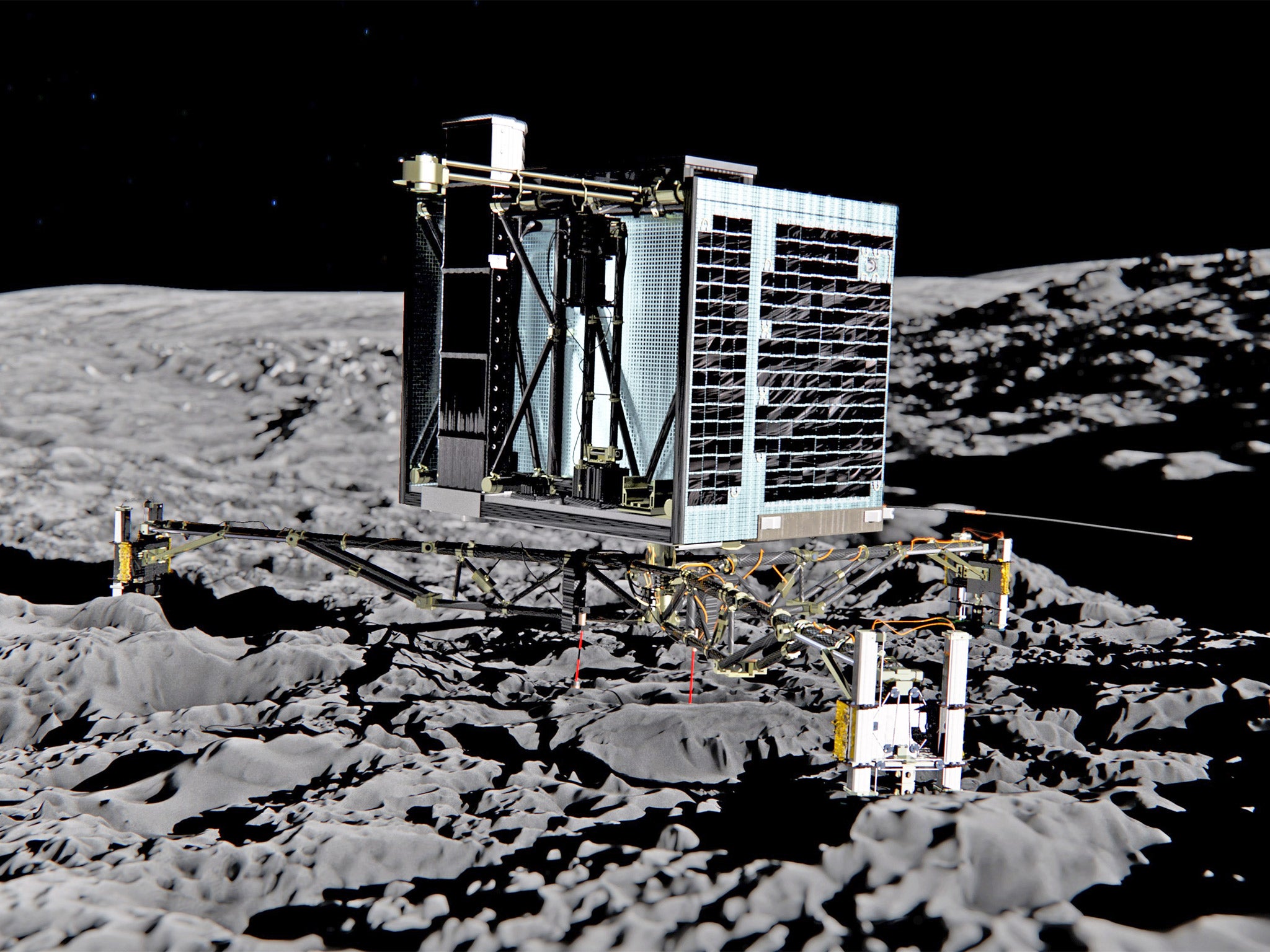Rosetta mission: First for science and humanity as Philae lander touches down on comet 67P
"This is a big step for human civilisation," said Jean Jacques Dordain, Director General of ESA

The Philae lander has become the first ever spacecraft to land safely on a comet after travelling through space for more than ten years and covering a distance of some 4 billion miles.
“We are there and Philae is talking to us,” confirmed Philae Lander Manager Stephan Ulamec from the European Space Agency (ESA) mission control. “The landing gear has been moved inside so we are sitting on the surface – and there’s more data to come but we are there: it’s done its job, we’re on the comet!”
Although details of the landing are still emerging, the ESA operations hub say that it was "a fairly gentle touch down based on amount of landing gear damping," but that the harpoons intended to secure the craft did not fire sucessfully as had first been thought.
This means that there's a possible danger that the lander will not be stable as the comet moves closer to the Sun and becomes more 'active' (this happens as the Sun's rays heat up the surface), but the ESA still stress that Philae is in "great shape" for the moment and that they will re-fire the harpoons shortly.
“We have no reason to think it won’t work,” said Paolo Ferri, Head of Mission Operations at the ESA, “but we have no understanding of why it is doing this.”
The comet itself is about as big as a mountain: 2.5 miles wide and around 2.3 miles high. If placed on Earth it would be taller than Mount Fuji (see graphic below), although early images of the 67P lent themselves to more unusual comparisons: apparently fused from two separate icy bodies, the comet was most often compared to a rubber duck.
Rosetta and Philae have also sent back their first images to Earth - although none from the surface of the comet. Instead they took snaps of one another as the lander detached from its parent craft.
Philae's ten onboard sensors and instruments will now begin the important work of analyzing material from the comet's surface as well as the surrounding atmosphere of gas and dust. Rosetta will stay in orbit around the comet for the next year, peeling off sometime around December 2015.
The information Philae gathers from the surface of the comet will provide new insight into the mechanisms of our Solar System and could even help us answer questions about the origins of life on Earth.
It's long been theorised that life was 'seeded' on Earth after hitching an interstellar ride on a comet and previous fly-bys of similar bodies have detected complex organic molecules. If Philae manages to find any water ice or amino proteins (compounds that are key to life) then it could offer some evidence for the theory.
More to follow...
Subscribe to Independent Premium to bookmark this article
Want to bookmark your favourite articles and stories to read or reference later? Start your Independent Premium subscription today.

Join our commenting forum
Join thought-provoking conversations, follow other Independent readers and see their replies